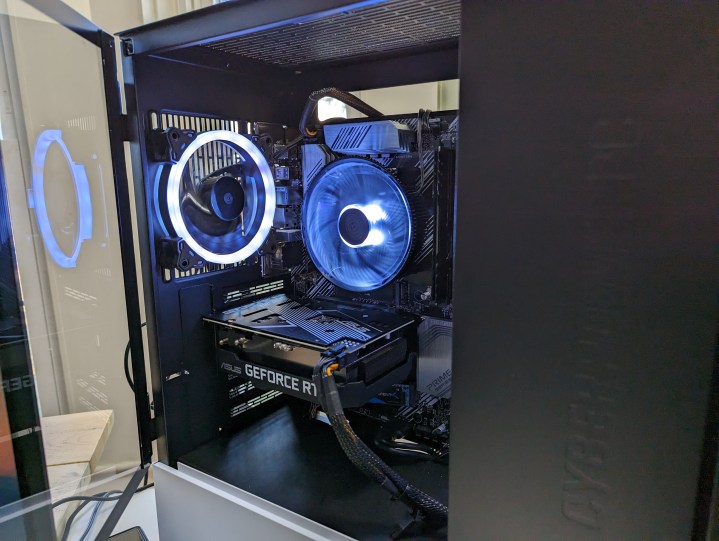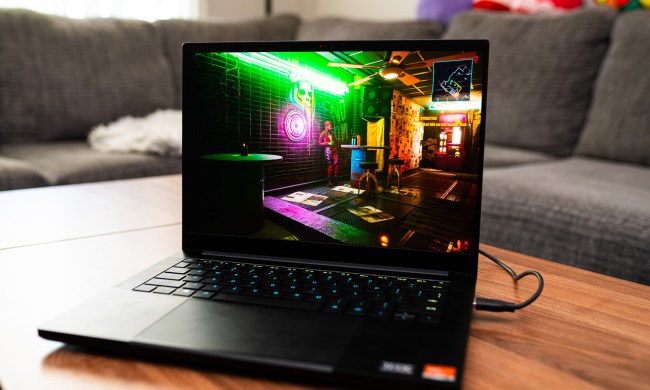Like many PC gamers, I’ve been waiting a long time to build my next gaming PC. Prices have been ridiculous over the past couple of years, and despite the improvements in the back half of this year, it’s still expensive to build a top-of-the-line gaming PC.
So,during Black Friday week, I conceded my intent to build my next gaming PC and bought a prebuilt gaming rig from Best Buy. Now, before you start writing that hate tweet, I have to say that there’s a reason for this heresy — namely, cost. And I can say with confidence now that this prebuilt system ended up being one of the best tech purchases I’ve made this year.

It was time for an upgrade
Having built a couple of PCs in my lifetime, I can acknowledge the joy that comes from completing your own build — the new parts smell, the scrapes, the head-scratching, the cursing — and the pride of saving extra cash for your next graphic card … I mean, kid’s college fund. It wasn’t until very recently when it made more sense (especially if you had the desire and/or technical acumen) to buy your own parts and spend a couple of hours assembling them into your dream machine.
One thing’s for sure, the PC DIY landscape has changed in the last two years. While it is better nowadays, prices and supply continue to fluctuate, particularly GPUs or almost anything silicon. All this brings me to the weeks leading up to Black Friday and Cyber Monday.
My Asus ROG laptop (Intel i7-7700HQ, GeForce GTX 1070, 32GB RAM), which I use for all the heavy lifting for my YouTube channel, still runs flawlessly. But at almost five years old, is starting to feel sluggish, especially with Premiere Pro renders, storage transfer speeds, and the lack of speedier ports.

My first choice obviously was to source the parts — even if it meant buying separately from major parts retailers. In terms of budget, the target would be under $900. As for specs, the build would be somewhere in the midrange with enough power for video editing and rendering, high framers-per-second 1080p and 2K gaming, and plenty of space for expansion. For reference, I kept my eyes on similar prebuilt holiday specials from iBuyPower, HP, and such (nothing fancy like an Origin or Alienware system).
Ultimately, no matter how I tried to make it work, the total price of individual parts with tax couldn’t undercut many of the prebuilts. I was looking at a $200 to $275 difference across the board, easily breaching my budget. Ready-made machines started to look increasingly enticing based on the savings and a much shorter wait time to get up and running. I ended up biting the bullet on a great Best Buy deal for a CyberPowerPC unit. I mean, I could always return it, right?
One stigma that comes with getting a prebuilt machine is that consumers have no control over what kind of parts their particular machine will have. Sure, there’s the advertised CPU, GPU, and perfunctory listing of RAM, storage, etc., but as to what brand or iteration — it’s in the hands of the factory and what batch of parts they had at the time of building your PC.
Some consumers don’t necessarily want that kind of gamble. Me? I like to live on the edge sometimes, plus I was quite curious to see whether my setup would be dope or nope.
Surprisingly well-built

Outwardly, the CyberPowerPC PC that I purchased was decidedly midrange for a gaming setup — the ad listed the venerable AMD Ryzen 5 5600X with 16GB RAM, an RTX 3060, 600W PSU, plus 1TB NVMe and 500GB storage. The tower case with tempered glass was attractive and at least wasn’t drowning in RGB lighting.
The first thing I did upon receiving the machine was to check for transit damage (none) and loose or disconnected connectors (none). I removed the back panel to inspect the cable routing and came away impressed — things were neat and tidy back there. CyberPowerPC even had an expanding foam pack to keep the GPU and surrounding bits from jostling around.
Between my visual inspection and checking the BIOS, I was also pleasantly surprised that I didn’t necessarily receive cheap, lowest-bidder type of components either. The motherboard is a Asus Prime B550+ supported by a Thermaltake 80+ Gold 600W PSU. The 3060 graphics card is an Asus Phoenix Nvidia GeForce RTX 3060 V2 (essentially a half-sized regular 3060 with the same power).
Memory was the olde, but still very solid XPG DDR4 3200 Hz RAM, paired with Corsair-branded storage. There’s no special AIO cooling, but the Cooling Master fans are quiet, rising to a decent 67 decibels (measured in the case) at full tilt.
Don’t be afraid of buying a prebuilt

It’s been two weeks since I powered this PC up, and so far, I’m still impressed. The machine hasn’t given me cause to return it, either for any problems or buyer’s remorse. Video editing is much smoother now, while I’m enjoying playing 1440p AAAs without performance or thermal concerns. Each time I glance through the glass panel into the innards of the machine, I can’t believe that $850 bought me this level of quality and attention to detail from a company I never gave a second thought to before.
All in all, not bad for a first experience, then. If this is, for the most part, how CyberPowerPC builds its computers, I wouldn’t hesitate buying one again. So, the moral of the story is: while DIY-ing is still the way to go, if you must stick with a budget, prebuilt rigs are currently the cheaper and more readily available option.



